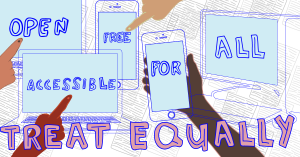On-screen fingerprint sensor
In Business, Official Blog, Tech-BLOG, Tech-Forum, TechnicalThe First On-Screen Fingerprint Sensor: A Glimpse into the Future of Smartphones
The world’s first smartphone with a fingerprint sensor built directly into the display was every bit as futuristic as it sounds. No more home button breaking up your screen space, and no more fumbling to find a sensor on the back of your phone.
All you need to do is press your finger on the screen—exactly where a home button would typically sit. Instantly, the display recognizes your fingerprint, sending a web of glowing blue light across the screen like a network of digital veins. Within a second, you’re in.
It’s a simple, elegant, and futuristic innovation—a home button that appears only when you need it and then disappears, leaving the entire display free for what truly matters.
How In-Display Fingerprint Sensors Work
The fingerprint sensor, developed by Synaptics, sits beneath the 6-inch OLED display—the same screen you look at and touch every day.
Here’s what happens behind the scenes:
-
When your fingertip touches the target area, the phone’s display lights up that specific region.
-
The reflected light from your fingerprint travels through the OLED panel to an optical image sensor hidden underneath.
-
The captured image is then processed by an AI-powered processor, trained to analyze up to 300 unique characteristics of your fingerprint—such as the spacing between ridges and unique texture details.
Unlike traditional fingerprint readers that use capacitive or ultrasonic sensors, this optical-based technology relies on light reflection.
Because this cutting-edge innovation is expensive to produce, it first appeared in premium flagship devices—and as the technology matures, it will gradually reach mid-range and budget smartphones.
Vivo Leads the Way
Vivo became the first smartphone manufacturer in the world to bring this in-display fingerprint technology to life in a production-ready phone.
The company had been experimenting with under-display fingerprint scanners for years. Earlier prototypes used ultrasonic sensors developed in partnership with Qualcomm. However, the final commercial version, created with Synaptics, adopted a more efficient optical sensor system.
In simple terms, the OLED screen emits light, illuminating your fingertip. That reflected light is then read by the optical sensor embedded below the display, which instantly authenticates your fingerprint.
The result? A smooth, button-free front panel, with the fingerprint reader right where your thumb naturally rests — on the screen itself.
Why It’s a Big Deal
This innovation marks a major step in smartphone design. For years, brands struggled to balance sleek, bezel-less screens with practical biometric security.
Now, thanks to in-display fingerprint technology, users can enjoy both:
-
A clean, uninterrupted display with no physical buttons.
-
A secure, intuitive unlocking experience right on the screen.
It’s a win for both aesthetics and usability — blending design and technology in one of the most seamless ways ever seen in smartphones.
Final Thoughts
The first on-screen fingerprint sensor isn’t just a cool trick — it’s a symbol of the next era in mobile innovation. As this technology becomes more affordable, it will soon become a standard feature across smartphones of all price ranges.
With brands like Vivo leading the charge, the future of smartphones is not just about bigger screens — it’s about smarter, more integrated technology that puts users first.













